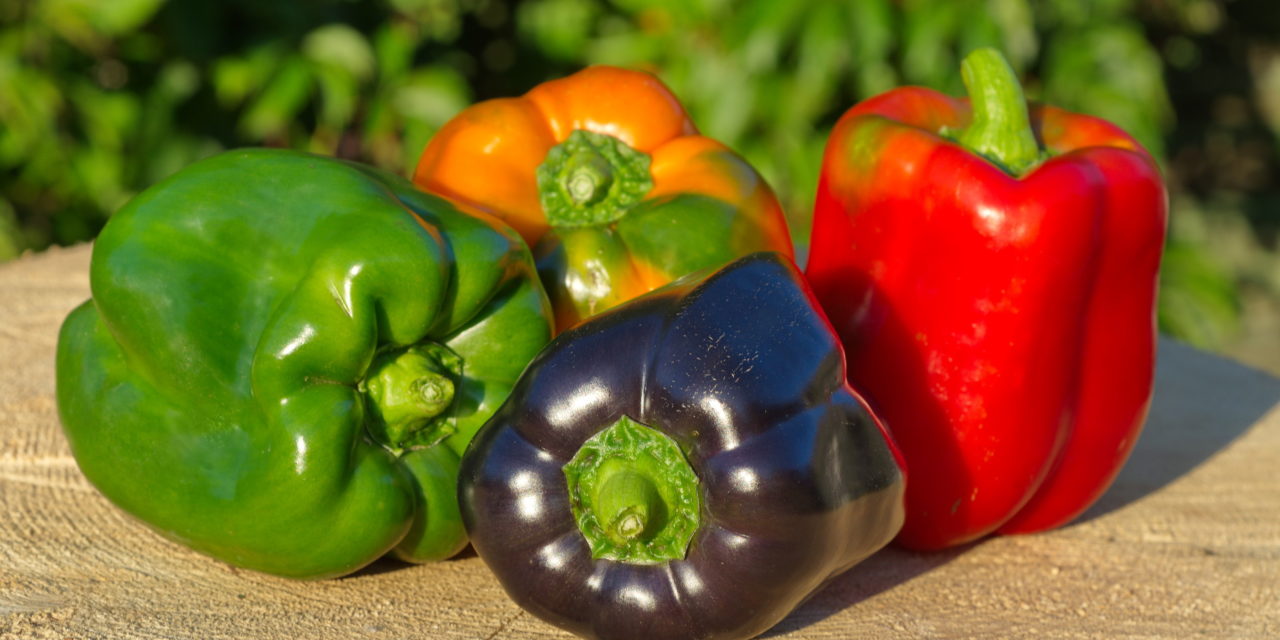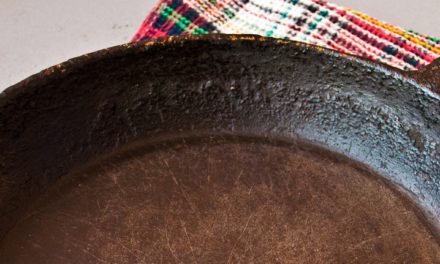 Purple, green, orange, yellow and red are the colors of the peppers we are picking out of our gardens now. There is a great garden adage that states the darker the vegetable, the richer in nutrients. I love my purple peppers as they are super sweet and easy on digestion.
Purple, green, orange, yellow and red are the colors of the peppers we are picking out of our gardens now. There is a great garden adage that states the darker the vegetable, the richer in nutrients. I love my purple peppers as they are super sweet and easy on digestion.
Note how small these peppers are. I didn’t do an important first step with peppers which is pulling off all the first blooms. With our late cold spring, I was delighted to see any blooms at all and decided to not pull them. Here is the result, small peppers, but peppers none the less!
An important tip for peppers is staking. The pepper plant will often become so over-loaded with fruit that a branch will snap off due to the weight of the peppers. To prevent this, simply stake it when you transfer the young plants into the soil. If you didn’t do that, you may damage the maturing plant when you try to insert  a stake too close to the roots. Cage it, if you forgot to stake it and it will save most of the fruit. The small tomato cages at Buchheit are too small for tomatoes but work great for peppers.
a stake too close to the roots. Cage it, if you forgot to stake it and it will save most of the fruit. The small tomato cages at Buchheit are too small for tomatoes but work great for peppers.
Peppers love hot weather! They will grow in any well prepared garden soil and do not require a great deal of fertility. Make sure to water deeply and cover with grass clippings or mulch to hold moisture in the soil. Peppers are not especially susceptible to insect pests but are quite prone to mosaic, a virus infection. Leaves become malformed, mottled in color and the plants will eventually die. The best protection is planting resistant varieties and disinfecting all of your garden tools regularly. Once plants are infected there are no controls, you must remove all diseased plants.
Pepper plants will not pollinate well above 90 degrees F and too much nitrogen will reduce fruit from setting. Now you can understand why I allowed my peppers to set fruit instead of plucking the first buds. It was getting into hot weather and the plants will now not set as much fruit until cooler temperature arrive.
If you wait to harvest peppers, they will continue to develop sweetness and additional Vitamin C content. Please make sure to cut the ripe fruit instead of pulling the peppers off so as to not damage the plant. You can use a mixture of one tablespoon of Epsom salts to a gallon of water to encourage larger fruit once the plant begins to bloom.
While I do dehydrate some of my peppers, I find for my cooking style, freezing works better. I take the time now to cut them in small pieces and lay them out on a tray to freeze. That way all the diced pieces freeze separately and once frozen, it’s easy to pour them into freezer bags for long term storage. They are great to add to eggs and casseroles in winter. It’s a healthy dose of Vitamin C!
I hope you pick lots of peppers this summer from your garden or a farmer’s market. They are one of the easiest vegetables to process for later use. I like to eat them like an apple. Be Blessed! Anne May






